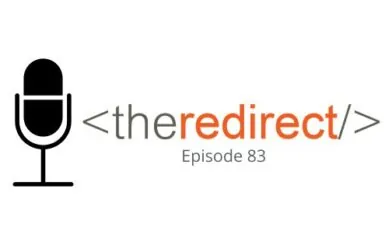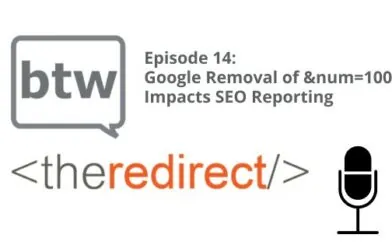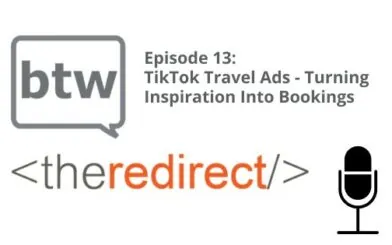Episode 17 / September 29, 2017
Listen Now:
In Episode 17, the BlackTruck team discussed Google’s 19th anniversary, actionable tips for optimizing the page speed performance of WordPress sites, and how PR and SEO relate and can work together.
Google Turns 19
Google turned 19 years old this week, and whether you like it or not, many SEOs have them to thank for their career. Since 1998, Google has been making advances in search and ad distribution, now leading the world in digital and mobile ad revenue. Nearly $50 billion in ad revenue will be generated from mobile alone this year. Read more in Recode’s roundup of Google facts to mark the occasion.
Improving WordPress Site Page Speeds
Tom Demers wrote a great article at Search Engine Land that covers some helpful tips on reducing the load time of your WordPress site. The article is specifically targeted at non-developers, which caught our attention because as SEOs, we often know enough to be dangerous when it comes to page speeds, but don’t have the same toolbox to draw from as developers when it comes to making overarching improvements.
WordPress, the ever-popular content management system (CMS), is a great platform for many websites out there. However, depending on if the site was built from scratch or if you’re using a theme, it’s a buyer beware world when it comes to the actual performance of your WordPress site. If you aren’t careful about the amount of information (code, data, etc.) you’re adding to the backend of the site, you risk slowing the time it takes for the page to load for visitors.
A common trend we keep discussing this year is how user experience is going to play a factor in how your site is seen in the eyes of search engines. This includes the site’s performance through load times. Improving load times will not only have a positive impact on user experience, but SEO as well.
The key is to make your site load as quickly as possible. Tom outlined three areas to focus on:
- TTFB (“Time to first byte”) – Ideally under 200 ms (milliseconds); at least under 500 ms. (A study shared on Moz a few years ago found that many top-ranking sites had a TTFB of 350 ms, while lower-ranked sites were frequently closer to 650 ms.)
- Start render – Ideally under 1 second; at least kept under 2 seconds.
- Full-page render – Ideally under 3 seconds; at least kept under 5 seconds. (Google’s John Mueller recommends load times under 2 to 3 seconds and mentions there that he uses Web Page Test, as well.)
The article cited recent Google data showing that 53% of mobile site visits are abandoned after 3 seconds of delay, and for every 1 second of delay on mobile, conversions go down by 20%.
How can non-developers make a difference in those three key areas? Common elements we see the Google PageSpeed Insight tool kick out include:
- Compress and resize images
- We suggest compressing “by hand” so as to not impact quality.
- Recommended plugin: Optimus
- Reduce server response times
- Enable compression
- Leverage browser caching
- Recommended plugin: WP Super Cache (we use this) or WP Rocket
- Eliminate render blocking code above the fold (CSS & JavaScript)
- Recommended Plugin: Autoptimize
- Minify code where possible
Note: Depending on the site, these changes will have various levels of impact. When using widgets or plugins, make sure they are specifically compatible with your CMS and server.
As a final takeaway, compare your load time to that of sites similar to yours and your competitors and see how you might be able to improve. However, don’t look at a megasite and say, “I want to be like that,” because it may not be realistic given the extent of their resources. Strive to simply improve your own site. Don’t let perfection be the enemy of moving it forward. Start somewhere, benchmark, and take note of your progress. Good luck!
Public Relations, Content Marketing, and SEO
Search Engine Watch shared an article by Jim Yu on the collision between PR, content, and SEO. The author begins by explaining that the discipline of PR has evolved, along with other aspects of marketing, to fit into the digital ecosystem. He makes a great point that “the value of appearing at the top of the search engine results page is arguably equitable with yesteryear’s goal of a front page headline.” What once was a goal of public relations is now easily applicable to search engine optimization goals.
Our discussion of this article turned to the three categories of PR objectives: awareness, attitude, and action, and how SEO ties into each of these from a digital marketing perspective. For example, searchers’ awareness of and attitude toward a brand can be impacted by that brand’s appearance on page one of search results pages, indicating it meets the needs expressed by their search query and (hopefully) is reputable. A way of persuading people to take action is to write compelling meta descriptions that convince searchers to click through to the site.
The article further outlined how PR, SEO, and content marketing are interrelated and influence each other, and ended with steps for aligning SEO, content development, and public relations. These include developing common target personas, tearing down silos among these teams, and collaborating on content.
We’ve discussed the importance of breaking down silos in the past. Collaborating for the best possible results seems like a no-brainer, but can be difficult to achieve without intention. Finally, we do have a caveat regarding developing personas: While we agree that PR, SEO, and content marketing teams should work together in reaching common audiences, we live by the belief that personas aren’t people. Public relations is about identifying key publics (made of real people) to establish two-way communication for a mutually beneficial relationship. This is a valuable concept to apply to digital marketing, as well. It’s always best to make sure your marketing efforts are directed toward real people and supported by real data, so both your target audiences and your brand can truly benefit when audiences interact with your brand online.
Thanks for tuning in! To catch future episodes of The Redirect Podcast, subscribe on Soundcloud, iTunes, or Stitcher.




